Thea: The Awakening
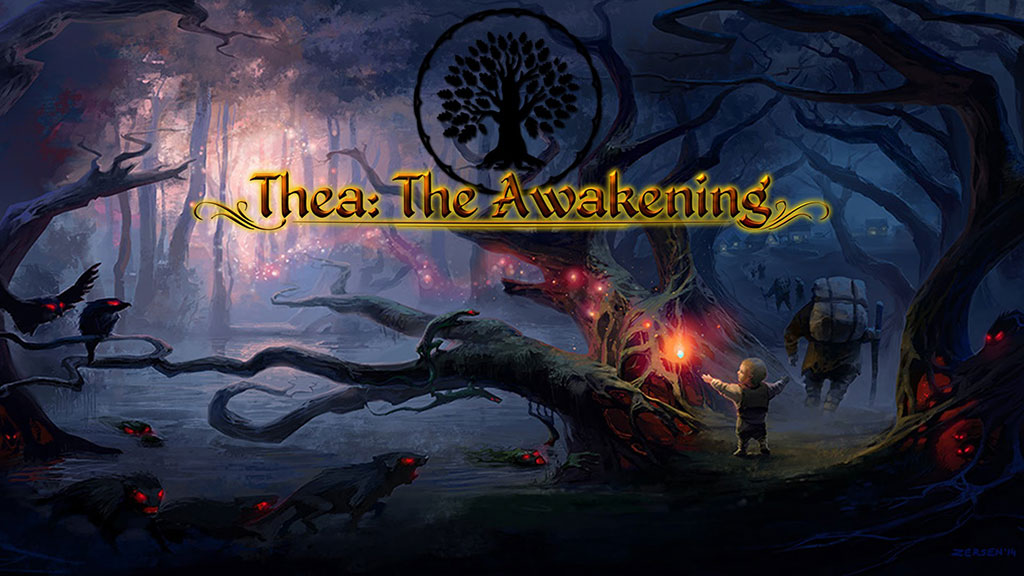
Thea is an interesting game. I picked it up on the Steam Winter Sale, and have thoroughly enjoyed the experience. It has a complexity that the initial style does little to reveal, and offers something missing in some many games… options.
When you start a game, you select a deity out of their pantheon, getting bonuses for your game. These deities level up as you play them, up to level five, and each level gives you another bonus toward your next game. You unlock more deities by reaching level three on the one you already have.
It is based around Slavic mythology, which is somewhat refreshing. The mythology is charmingly old school, with a very medieval feeling compared to modern fantasy. Much of the dialogue is voice acted, and all the sounds and voices fit well. The game works wonderfully when you need something quiet to play, and nothing really needs sound to make it shine. The weakness of the game may be that it is always the same game mode. No multiplayer options or alternatives to the approach are currently offered. I do think there is room to make them, and that if done as well as the rest of the game they would be worthwhile.
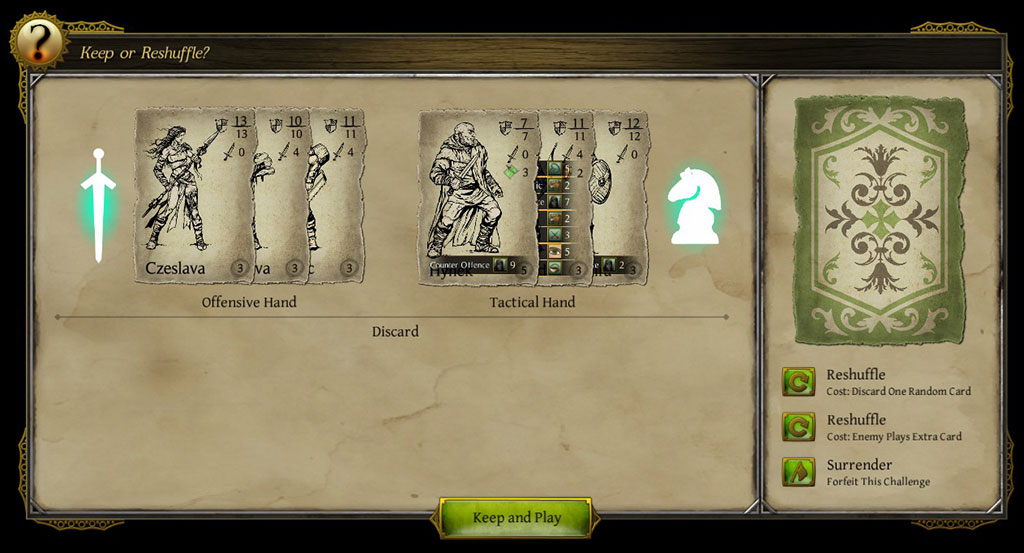
At the start of a new game with your deity chosen, you look at a short dialogue. This is the basic tutorial, and skipping the first few steps is nothing that makes or breaks a game. Unless, maybe, you started on a very high difficulty. After that, there is a screen that appears to be from a turn based strategy game. It is, and it isn’t. There are a few notable differences, and one of those is that your village is your village, period. It never moves, you can’t make more, and it must survive or it’s game over. Each map is procedurally generated, and will look something like this:
Your first order of business is to get your characters to work for you. You’ll have some in the village, and some nearby called ‘Expedition 1.’ You can create as many expeditions as you like, shifting resources between them and the village via the inventory screen, which I will talk about later. However, if the village or expedition is too weak, they will fail challenges. When you fail challenges, people die. You don’t want your people to die, they are a precious and somewhat scarce resource. If you click on the village or expedition, you get a pop-up selection system. This allows you to interact with each group. It also allows expeditions to camp or explore ruins and important locations. Your village or camp will look roughly like this:
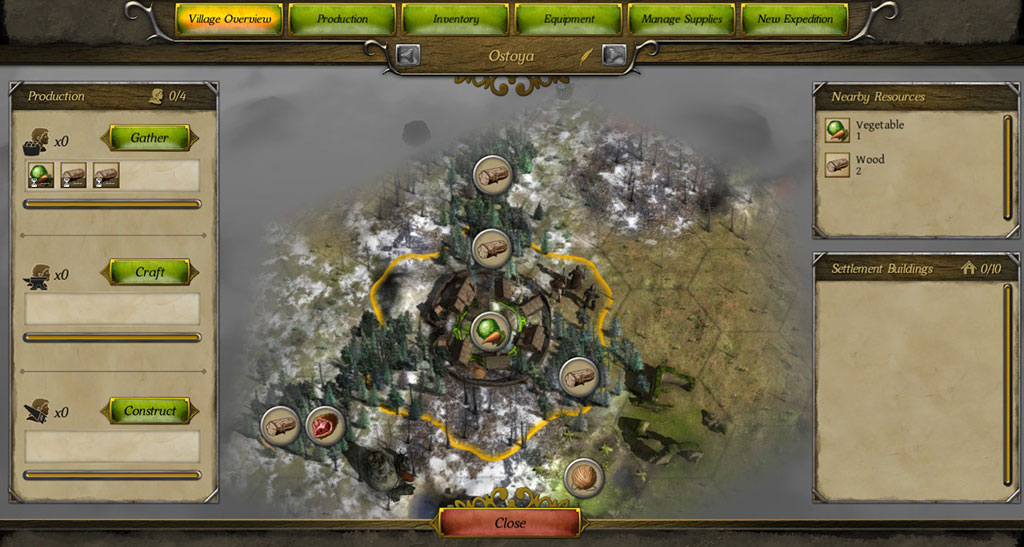
You can see resources there, and there’s a button to view them on the world map. This is important because your people can gather these resources when they camp nearby. Your village never moves or grows to more tiles, so only the resources within 1 hex, or those that spawn there when unlocking new resources in the research window, can be harvested by the village. Your expeditions must do the rest! To do that, you must have them camp on a tile next to or on the tile with the resource you want.
Everything your group has is in the inventory: characters, items, resources, food. You can destroy items if your expedition has too much weight and deconstruct items you no longer need. There’s also a convenient deconstruction system with looting items so you don’t have to visit the inventory for that constantly. Your equipment is also shown, including which character is using it. I have an axe that nobody is using in the picture, along with a number of items people are using. This also carries over to the equipment window.
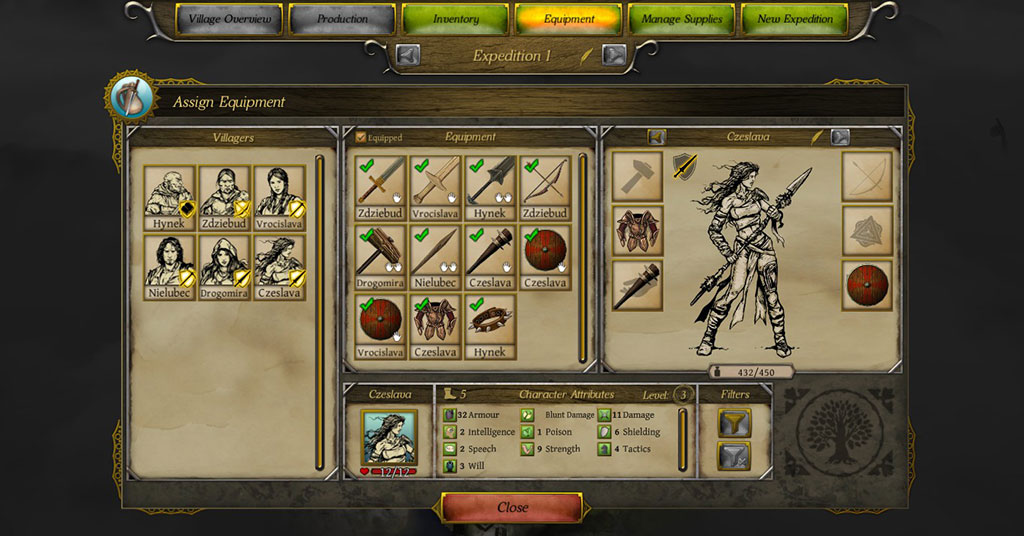
There are seven types of equipment in the game: Weapons, Armor, Shields, Tools, Artifacts, Jewelry, and Ranged. When starting a game you won’t have every piece filled in on your characters, much like you can see in the picture. Each character can equip items based on their class. The picture shows a warrior, who can equip everything except jewelry. You can also see that Czeslava, the character, has a weight limit that is nearly met. A character can’t wear more than their weight limit. There are some situations where they can have too much on, and they will be considered completely unable to move, halting any expedition movement. Should it happen at the village it doesn’t seem to matter, unless you were hoping to send that character on an expedition. That weight limit is based on Strength, which also affects the total expedition weight limits. Those aren’t quite as strict, only reducing movement by half if overweight.
You also see your character’s stats in the equipment screen. They are at the bottom of the screen and tell you what they do when you mouse over them. The stats are important in different challenges, and building a group that can take on at least a couple of different situations is important. Most important is direct combat, which I will cover with the other challenges. These stats grow over the course of the game, as well as, with new equipment. The advancements are random, and can make a very one dimensional character into a great multitasker later on.
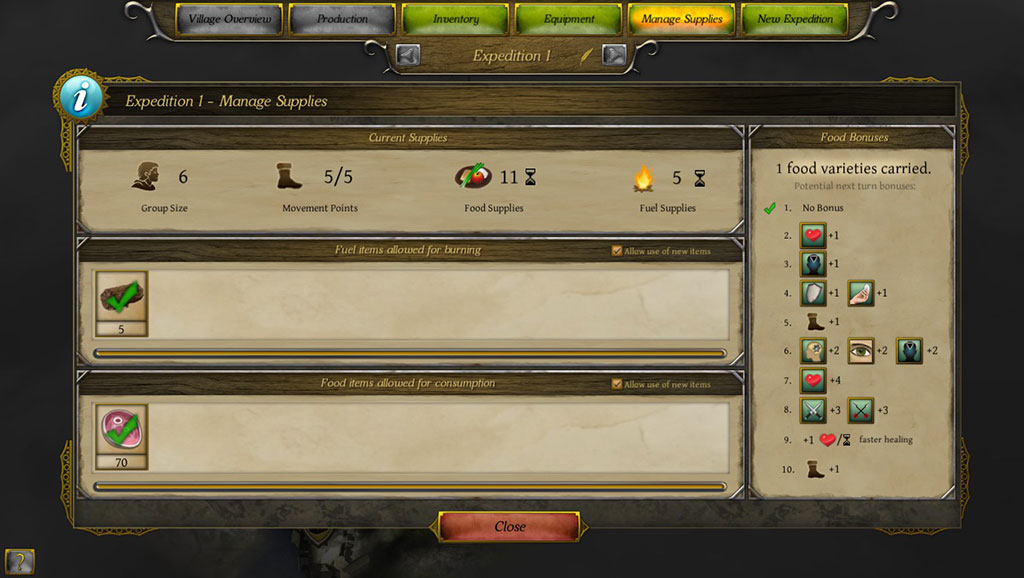
Food is very important in Thea. It offers multiple benefits based on the number of types you have. Fuel for fire is also important, although only one type of fuel is of benefit at any given time. Having no food causes damage to your people. Having many kinds gives stacking buffs, up to ten kinds of food. Having no fuel causes gathering to take twice as long, and also doesn’t allow wounds to heal as quickly when camped or in the village. You can manage the resources you wish to consume, saving rare food for when you really need the benefits of many food types and saving the rarer fuels for crafting.
Why should you care about crafting? Simply put, you don’t have to. You can play and succeed at Thea without crafting on lower difficulties. However, crafting offers a lot to improve your village and equip your people. Additionally it boosts your research points to help unlock more crafts, materials, and buildings. Buildings in turn can draw new villagers to settle, depending on the building and materials used.
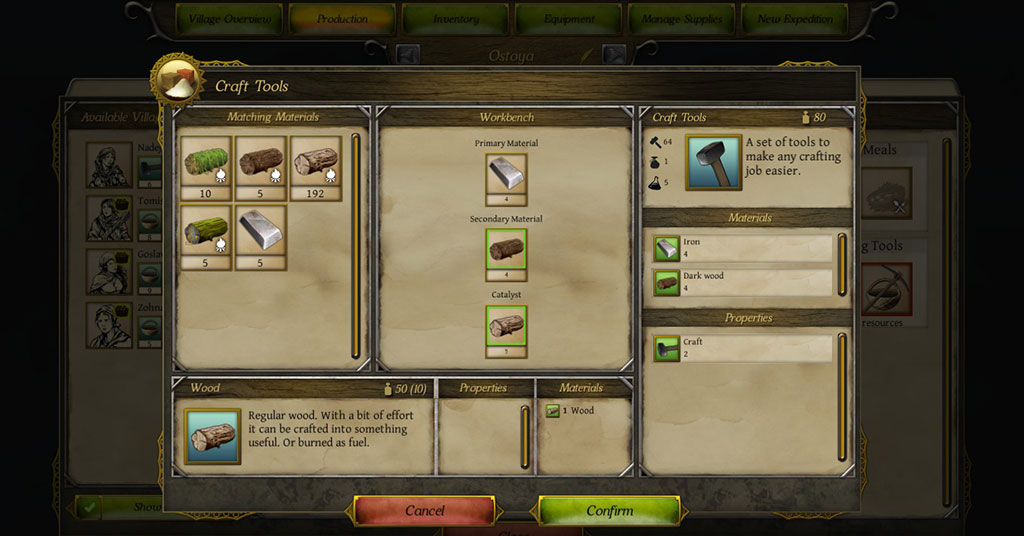
The crafting system is interesting, allowing for a type of material in each slot. There are always three materials required, although sometimes you have options for different material types. For example, when building a well you can use stone or wood. Additionally, this is the only viable means of getting tools, which speed up crafting and gathering and makes some challenges easier. Once you decide on the materials, you must assign crafters to do the work.
You will also find children in the game. Children are as valuable as people, except they can’t do anything until they grow up. Someday, though, they will grow up and be approximately as strong as your other people. This is one of many things Thea does very well. The game keeps a record of how many levels you have gained. It then adjusts new members to be strong enough to survive the more difficult challenges that have come up. Children are offered one of a number of classes, some rare and some common. In the shot below, you can see a child who was only offered the common classes upon growing up. The rarer classes offer different benefits and skills, but each of the core classes can grow to be effective in those skills too.
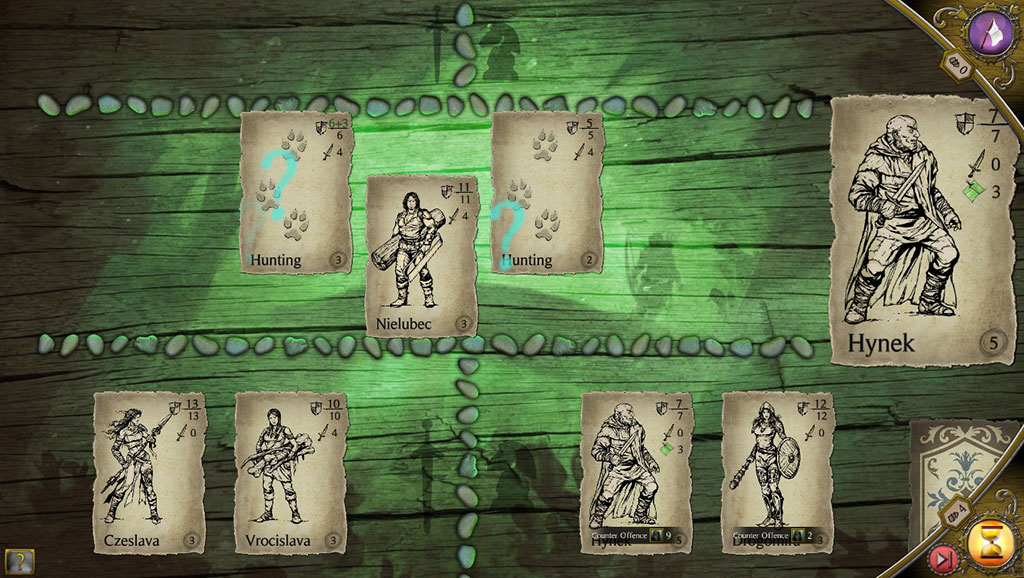
Whenever you have an encounter, you have some dialogue show up. It describes the situation, and offers choices based on what your group can do. One of the neatest aspects of the game is the idea that any encounter can be resolved multiple ways. It is almost a shame that most enemies will stick to a good old fashioned fight, but I can understand why they would avoid the other options from a gameplay perspective.
Whenever you have the dialogue options, you get to decide how you wish to approach the event. There are a very few early encounters that only have one option. These exist solely to direct you to useful features or quests toward game goals. Once you have selected the type of challenge you wish to engage in, you will see another screen detailing the stats used in the challenge and how many foes there are. Each of the icons for the stats relates to the same icon for stats in the equipment screen. Knowing your abilities is key to winning.
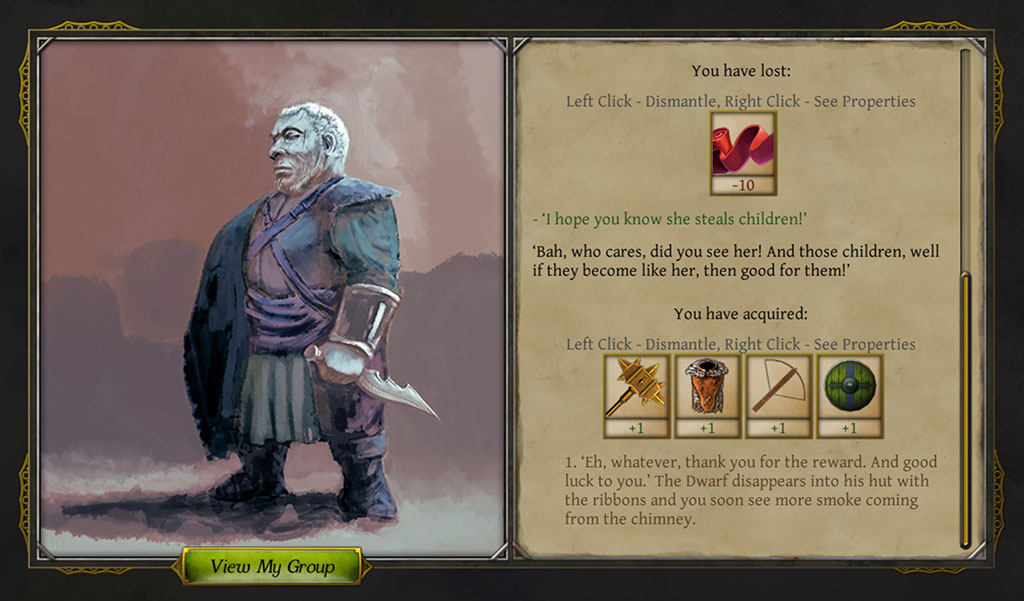
You may auto resolve if you are sure of the results. I would only suggest doing so if you are far more powerful, as auto resolve will not play as well as you, and will lose some challenges you should win. However, it is useful for dealing with minor challenges as you move on.
Instead select Begin Combat to move on to the card game. Your characters will be shuffled into offensive and tactical roles, and depending on setting you may have a chance to reshuffle. At some difficulties there is a cost associated with reshuffling, and it is entirely random. Thus, it should only be used when you really need it, or if you are feeling impish!

Once you accept the shuffle, you begin the tactical phase. This involves taking turns laying out your cards. Mastering this card game will help you in the various challenges ahead, and taking a little time to learn all the intricate details is important. Combat will occur with a tactical phase, then two combat phases before reshuffling.
As you can see, the two hunting challenges are now cards in the AI’s hand. It got the first turn, which is random, and played an offensive card to the field. Offensive cards can attack both rounds of the upcoming combat phase. Offensive cards are in the left half of the screen, tactical are on the right. Their defenses at the top are health + shielding over max health. Therefore the card in play currently can take nine damage, with a maximum health of six. This illustrates shielding perfectly. It is disposable protection which allows you to take hits without wearing on your health. It lasts through a full two combat round shuffle.
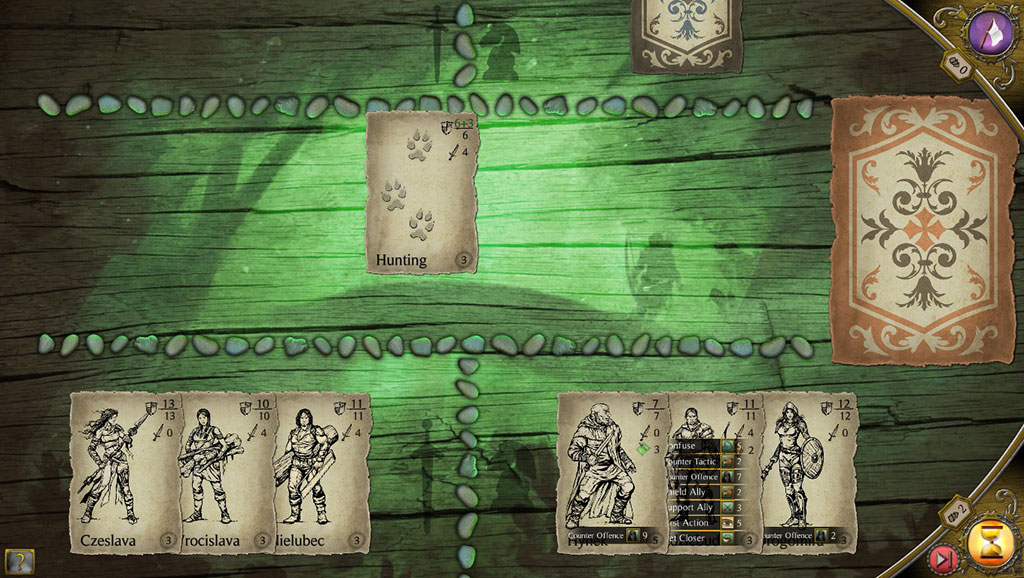
The damage the character deals is below that, in this case four damage. There are a number of damage types, and they all have their own benefits. In this case, it is all normal damage. My offensive cards also have only normal damage. The fourth card has no normal damage, but three green damage. Green indicates poison, and has the special effect of hitting twice if you have damaged the health of a card and no shielding is in the way. My fifth card has a ton of tactical options on it and a two with a shield icon hidden under them. This means it has two shielding.
Tactical cards have many possible effects, and can use them to either benefit your cards or disrupt your opponent. In this case, I am going to take that fifth card and confuse my opponent’s offensive card. Any tactical card will affect the rightmost card on the field it can. After this, I will play one of my offensive cards.
The AI played the tactical card with ‘Get Closer.’ It isn’t an option for my tactical cards as it requires either piercing, normal, or blunt damage. All tactical side cards played with this start confused, so they won’t attack the first round. Piercing damage plays the card ahead of the last card if it was an enemy, and deals half damage to that card. Blunt damage can deal any remaining damage to a second card if it finishes the first card. I’ll play my other offensive card with damage at this point, and end my turn. This means I’ll have two turns of attacks with each card, and the AI will only get to attack on the second round.
The combat will then start. The rule here is that combat starts as soon as neither side plays a card, or when a single side cannot play a card and the other side ends their tactical turn. Since the AI was out of cards, I could play as many as I wanted. There was no benefit to playing other cards though. So I ended the tactical phase and moved to combat.
Combat works by having each character card attack in order from the left to the right side of the screen. If confused on round one, the card will become unconfused and ready to attack for round two. Each card randomly selects left or right and attacks that direction. However, if there is nothing to attack that direction, it tries the other direction If there are no cards in either direction, it attacks cards left in the offense or tactical areas, and then discarded cards. Therefore if you know you will lose your played cards in a round, you can protect your discarded ones by leaving others in the offence or tactical slots.
There is a wealth of options to make the system work for you. Combat is not just all about numbers It also requires mastering the tactical phase A well laid plan can be wonderful to behold, or terrifying when the AI surprises you.
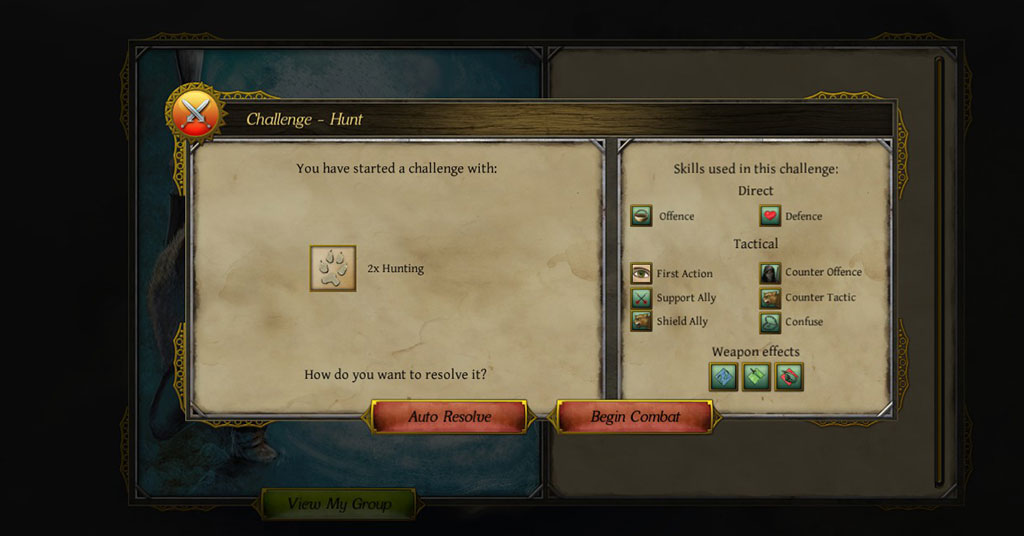
Needless to say, I won the challenge in the screenshots. Not only did I have six cards to work with against two, but I was able to use the tactical phase to foil the AIs plans with confusion. It did take me to another reshuffle though, before I could finish off the challenge entirely. I only had normal damage, so even though I could do sixteen points I had to hit one enemy with five health twice, and the other with six health and three shielding was able to survive two hits of four.
The game world produces more difficult challenges as you survive longer, and defending the lands around your village is important to prevent a number of enemies from attacking on the same turn, resulting in multiple challenges, which slowly kill your characters.
Thea has been a wonderful addition to my library. It offers an engaging mythology, a solid need for thought and strategy, and a wealth of options to dealing with the random events that pop up. It won’t do much for those looking for fast action and flashy graphics. For those looking for a solid, thoughtful game with some interesting mechanics it has a lot to offer It is to them that I heartily recommend Thea: The Awakening!
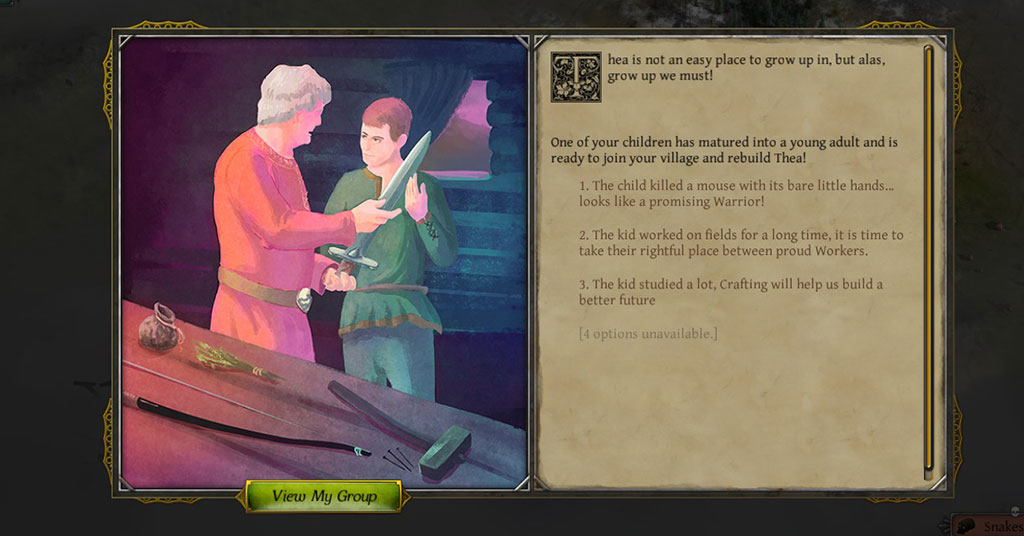
About the Author
Jairone
Senior Editor
Robert joined Gaiscioch during the Rift chapter, and decided to stick around because the people are awesome! He has a long history of playing games, mostly RPG or Strategy, and has played MMOs since they were born of MUDs.
Aside from his gaming, he also enjoys reading and cooking. Robert has also been previously published as a contributor with Rift Junkies for several articles during the 'Storm Legion' expansion. He does not always use the moniker 'Jairone' but it is a frequent choice in honor of one of his Grandfathers, as it is based on his middle name of Jerome.
